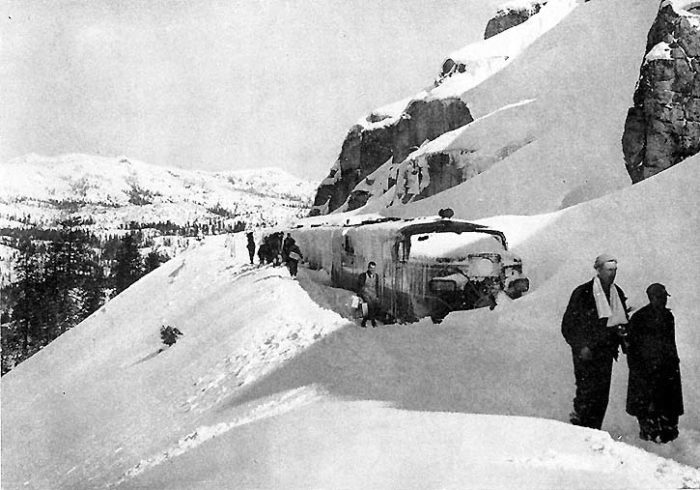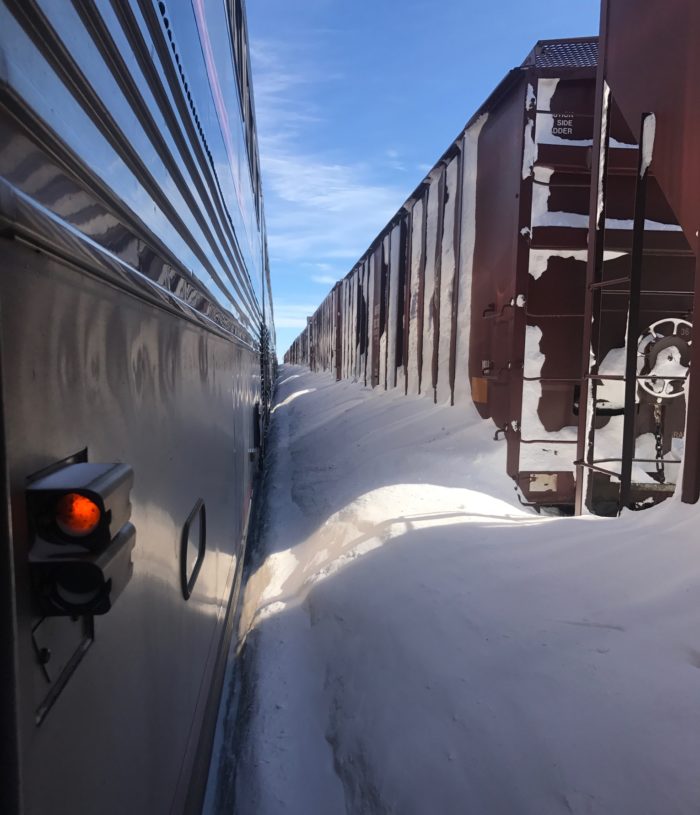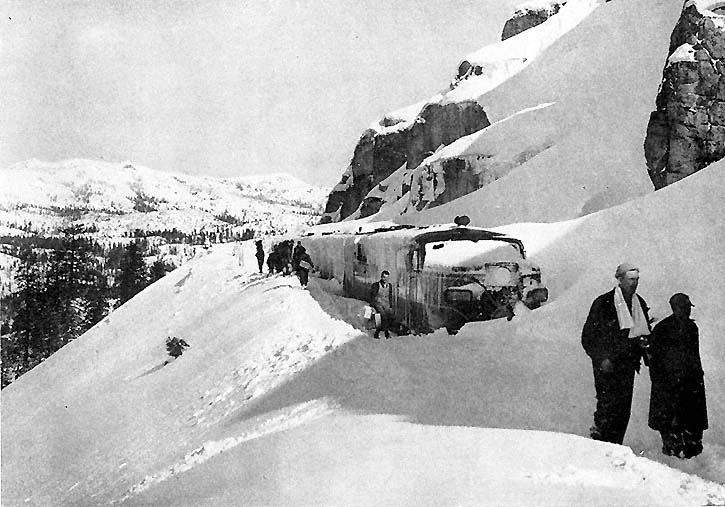Empire Builder Gets Snowed In.
Those of us working as advocates for passenger trains often argue—and with valid reason—that bad weather has less impact on train travel than on travel by highway or by plane. However, passenger trains do run into weather related problems—heavy rains in the northwest trigger mudslides that cover the tracks and “service interruptions” in the midwest caused by Spring flooding is almost an annual event. Every so often, though, snow and lots of it causes problems for a passenger train.

The most famous incident was in 1952 when the westbound City of San Francisco stalled in heavy snow attempting to cross the Sierra Nevada range by way of 7,000-foot high Donner Pass. And just a dozen years ago, the eastbound California Zephyr got stuck in 19-foot snow drifts within a few miles of that same spot. Some 220 passengers were finally taken back to Sacramento until the pass could be reopened.

A few days ago, just west of Rugby, North Dakota, Amtrak’s Train Number 8, the eastbound Empire Builder, became stuck in 25-foot drifts of snow that high winds had piled up against a cut of freight cars sitting on a siding.
The Builder’s twin locomotives, aided by two BNSF units—that’s the railroad owning the tracks where all this occurred—weren’t able to budge the train. Finally, a work gang of men from BNSF, attacked the huge drifts from under and between the cars the old-fashioned way—with shovels.
While that was going on, the train’s engineers and conductors “went dead”. An operating crew can only be on-duty for 12 hours, after which a fresh crew has to take over. That rule is firm, inflexible and cast in concrete, right to the second. But the relief crew took so long to find and get to the stalled train that THEY had to be relieved.
It was, in a word, a mess. The Builder was stuck in that 200-foot-long snow bank for thirteen hours and it’s my understanding that the train finally reach Chicago a total of 17 hours behind schedule.
A few years ago, my wife was stuck for five hours on the tarmac at Chicago’s O’Hare. Personally, as long as there was heat and hot coffee, I’d rather be on a train for 13 hours in a North Dakota snowbank.




Interesting weather-related history.
It does seem ridiculous that there isn’t enough flexibility with
12-hour work rules in situations of unforeseen emergencies such as
trains being stranded in snow, for example, to allow the existing on-board crews to stay with their train until service can be restored, especially if it would be difficult for another crew to reach the stranded train.
I certainly can’t see how such rigid rules serve the public. Wonder if these work rules are driven by labor unions? (Doubt if fire fighters or police ‘go dead’ no matter what in the middle of one of their emergencies.)
Surely there has to be some limit to the length of time engineers and conductors can safely be on duty and responsible for the lives of 200 or more passengers. These are highly unusual events and is it not better to inconvenience a couple of hundred people on relatively rare occasions than to relax rules that could impact many thousands? And where would you set the limit? Fourteen hours? Sixteen? Eighteen? And the rules were promulgated by the government, not by the unions.